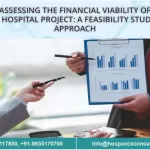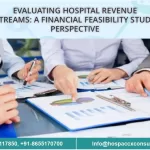Healthcare Investment Opportunities in Sri Lanka and way ahead
Sri Lanka has provided free healthcare to all citizens, since independence. While government-established and managed hospitals provide healthcare free of cost, privately established and managed hospitals provide healthcare on a fee levying basis.
Sri Lanka’s total expenditure on healthcare, both public and private, is 3.9 percent of GDP, similar to lower middle-income countries’ health expenditure of 4 percent, but lower than upper middle-income countries’ health expenditure of 5.9 percent. In terms of public health expenditure (1.6 percent of GDP), Sri Lanka compares favourably with regional peers in South Asia (0.9 percent of GDP) and lower middle-income countries (1.3 percent) but spends just half the level of upper middle-income countries (3.2 percent). Over time, Sri Lanka’s health expenditure has declined from 2.3 percent of GDP in the year 2000 to 1.6 percent of GDP in 2016. However, public expenditure on healthcare has increased in recent years with a 34 percent increase of actual spending in real terms (inflation adjusted) between 2013 and 2016. Public health expenditure budgets achieved, on average, 92 percent execution during this period.
Sri Lanka’s Economy
Sri Lanka is attempting to sustain economic growth while maintaining macroeconomic stability under the IMF program it began in 2016. The government’s high debt payments and bloated civil service, which have contributed to historically high budget deficits, remain a concern. Government debt is about 79% of GDP and remains among the highest of the emerging markets. In the coming years, Sri Lanka will need to balance its elevated debt repayment schedule with its need to maintain adequate foreign exchange reserves.
Key Economic Statistics
The nominal GDP of Sri Lanka stands at $84.5 billion with a nominal GDP per capita of US$3,682 (113th worldwide); its GDP based on PPP stands at US$306.997 billion with a GDP (PPP) per capita of US$13,909 (120th worldwide).
Inflation measured by consumer price index (CPI) is 12.1% while the country has a Human Development Index (HDI) of 0.782, ranking it 72nd in the world. The Ease of Doing Business rank is 99th position in 2020.
Investing in Sri Lanka
Sri Lanka is strategically located at the crossroads of major shipping routes to South Asia, the Far East, and the continents of Europe and America. Home to one of the Top 25 Container Ports in the World, the country is a key port of call for shipping lines and airfreight services. Further, Sri Lanka’s proximity to the Indian sub-continent positions the country as a gateway to a market of 1.9 billion people in South Asia alone. These factors combined, generate keen interest for Sri Lanka as a preferred investment destination in the region.
Recent Healthcare Investments in Sri Lanka
Foreign Direct Investment remains a crucial component for Sri Lanka’s economy. In recognizing the crucial role of the Ministry of Foreign Relations and the Sri Lanka Missions in promoting Sri Lanka as an attractive destination for FDIs, the Economic Affairs Division has since 2018 set investment targets for respective Missions abroad in consultation with the BOI.
Colombo International Financial City
Colombo International Financial City is a special economic zone and International Financial Centre located in Colombo, Sri Lanka, which is currently under construction on reclaimed land adjacent to the Galle Face Green. Spanning 269 hectares of reclaimed land from the sea, the project is worth US $1.4 billion and is the single largest investment in Sri Lanka. Colombo being amongst the top 25 busiest ports in the world, the proposed project is being marketed as a ‘world class city’ not just for Sri Lanka, but for South Asia. The land reclamation work had been completed as of January 2018. The government has been able to woo an international hospital chain to invest in a high tech hospital at the Port City which will encourage medical tourism to Sri Lanka.
China-Sri Lanka Friendship Hospital
Another landmark project is the Kidney Hospital in Polonnaruwa, initiated as a result following a request by former President Maithripala Sirisena to the Chinese government in 2015. It opened in 2021. The new Chinese-funded hospital in Polonnaruwa consists of a 200-bed ward complex, OPD with 100 dialysis machines and six modern operation theatres, which have been constructed at a total cost of nearly 80 million dollars. The hospital, built with a Chinese grant of $60 million specialise in kidney ailments, a widely prevalent and recurring concern in the region, especially among farmers.
oDoc
oDoc is the largest digital health company in Sri Lanka, serving over 200,000 users and 70+ corporates. oDoc offers a mobile application that enables consumers to connect with a doctor remotely and avail teleconsultation for non-emergency conditions. The SaaS-based mobile application also allows consumers to request or schedule an in-person consultation, compare doctor profiles, consult anonymously, search for health information including disease symptoms, and store health records. They have grown revenues by 10X since 2020, and as of mid-2021, they have onboarded over 1,000 doctors across 60 specialisations. In response to COVID-19, oDoc launched the Sri Lanka National Telemedicine platform on behalf of the Ministry of Health in Sri Lanka. oDoc is Sri Lanka’s only Techstars and Stanford StartX backed company.
Conclusion
Sri Lanka has always enjoyed the benefit of its strategic location, being at the crossroads of major global shipping lanes and today’s fastest growing economies. The investment rationale for companies setting up in Sri Lanka today is very similar to how many global corporations leveraged Hong Kong and Singapore as more nimble, business friendly launch pads to access China during its hyper growth phase in the 90s and 2000s. That same rationale holds true for Sri Lanka as a gateway to India, and more specifically to South India, which is the world’s fastest growing economic bloc at scale (population of 300mn; clocking annual GDP growth of 8%). This theme is already in play, evidenced by the fact Sri Lanka currently handles nearly 50% of India’s international cargo volume. It is important to note that over the next 15 years, the world’s 10 fastest growing cities will all be in India, with 5 of them in South India (just 1-2 hours’ air travel from Colombo), strengthening Sri Lanka’s proximity advantage and underscoring its market-access attractiveness to foreign companies. At the same time, Sri Lanka is emerging as a meaningful link in China’s Belt and Road initiative, and is poised to benefit significantly via the accelerating trade growth and associated investment projects in that channel. Put very simply, Sri Lanka is at the epicentre of a substantial portion of the next 20 years of global economic growth.
For more information about the Country and Healthcare opportunities in Sri Lanka, you can visit the company website on www.hospaccxconsulting.com or contact us directly.
Related Team Members










